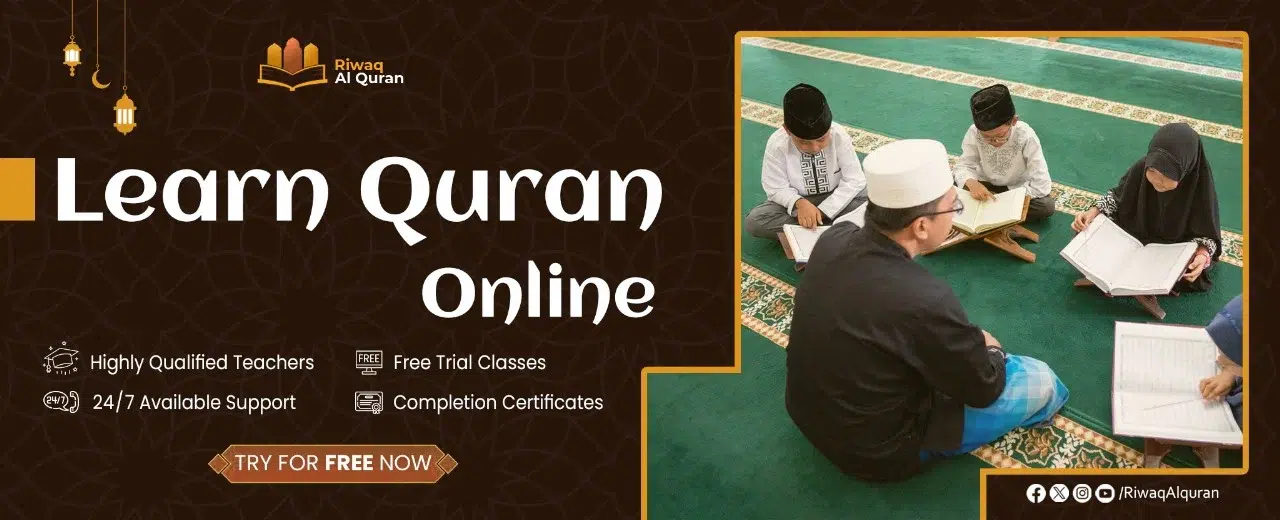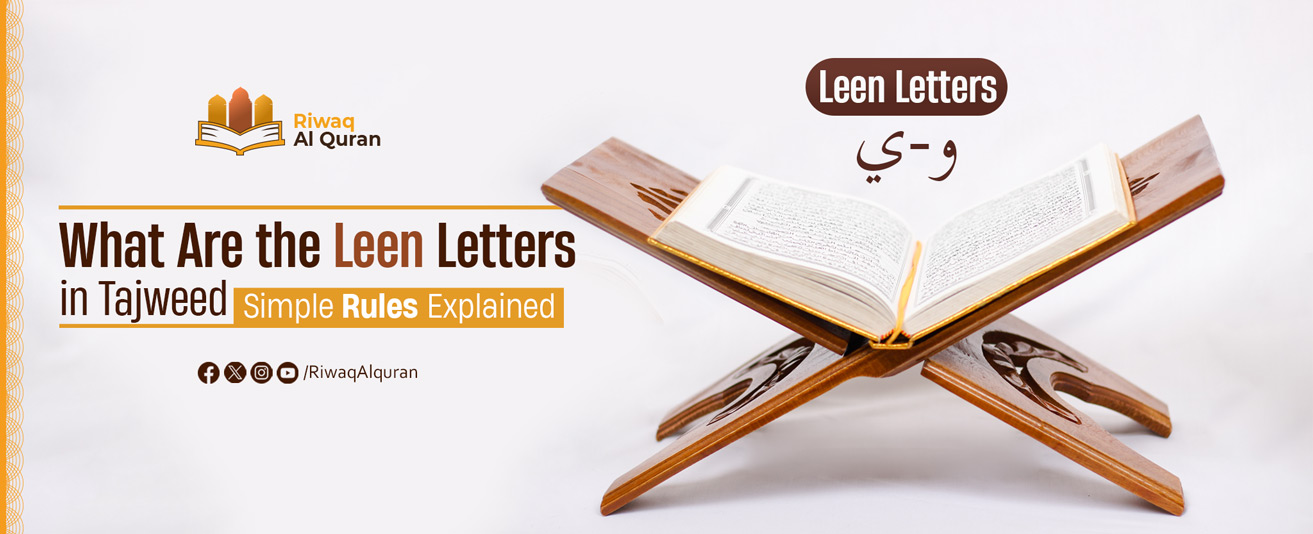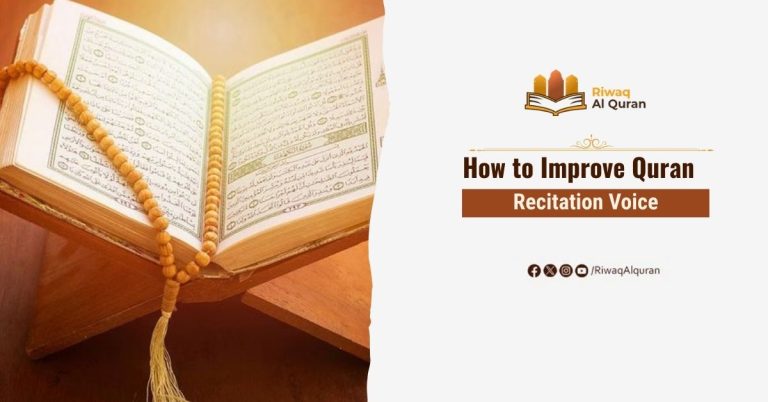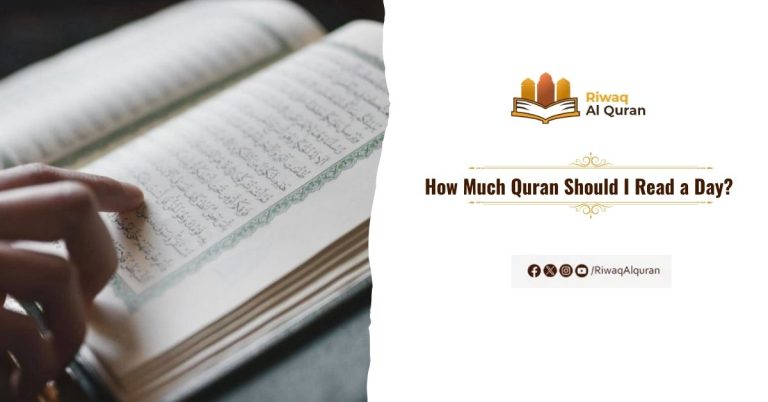In Arabic, Leen letters (Arabic: حروف اللين) are two Madd letters that have a very important role in Tajweed [proper recitation] of the Quran. They represent a sub-category of Madd letters. These have more significance in the phonology than in the written text of the language, and since the Quran is basically an oral tradition, these phonological concepts have a special importance in the proper recitation of the Quran.
In this article, we will explore the meaning of the Arabic word “Leen” (لين) as well as the definition of Leen Letters in Arabic. Then, we will examine the two Leen letters: Waw and Yaa, in more detail, with some examples from the Quran. Also, we will tackle the main rules of Leen letters in Tajweed. Finally, we will give some insights and steps to follow to perfect these rules of Leen Letters.
Table of Contents
Leen Meaning
The word Leen (لين) in Arabic means ease and softness. This type of Madd is called Leen as it is done softly and effortlessly by the reciter. So it is more comfortable for the reader to give it that specific rule. When the reciter does not stop at that word [i.e. connects it with the following word from the following verse], Madd Leen is NOT implemented, rather the Madd is back to its normal state “Madd Tabee’i (مد طبيعي)” that lasts for 2 Harakat only.
Leen Letters In Arabic – Huroof E-Leen
Leen letters are two in Arabic: Waw (و) and Yaa (ي). As we have mentioned, they must be Sakin, the letter that precedes them must have a Fatha, and the letter after them must be Sakin. Let’s see Waw and Yaa as Leen letters in context:
“فَٱتَّبَعُوٓا۟ أَمْرَ فِرْعَوْنَ ۖ وَمَآ أَمْرُ فِرْعَوْنَ بِرَشِيدٍۢ”
Here, if the reciter chooses to stop [make Waqf] after the first “فِرْعَوْنَ”, the Waw (و) in this word becomes a Leen letter, as the final “ن” letter in the word becomes temporarily Sakin, and thus the Madd letter (و) fulfills the three conditions of Leen. In this case, the reciter can give the Leen letter here 2, 4, or 6 Harakat of Madd.
In comparison, the second “فِرْعَوْنَ” [the bold word] has a Madd letter [Waw (و)] that lacks one of the three conditions of Leen, i.e. the final “ن” letter in the word is not Sakin as it has here a Fatha (َ). So this Waw is a Madd Tabee’i letter that lasts for 2 Harakat only.
Madd Leen is to extend the Madd sound for 2, 4, or 6 Harakat [one Haraka is equal to one finger count]. For a Madd letter to be a Leen letter, it has to fulfill three conditions:
1- It must be Sakin.
2- The letter preceding it must have Fatha (َ) only.
3- The letter after it must have Sukon [this Sukon is either original or occasional (Aridh)].
Examples Of Lean Letters In The Quran
The Quran has many examples of Leen letters. Please see below three of these, followed by more detailed explanations.
“وَأَدْخِلْ يَدَكَ فِى جَيْبِكَ تَخْرُجْ بَيْضَآءَ مِنْ غَيْرِ سُوٓءٍۢ ۖ فِى تِسْعِ ءَايَـٰتٍ إِلَىٰ فِرْعَوْنَ وَقَوْمِهِۦٓ ۚ إِنَّهُمْ كَانُوا۟ قَوْمًۭا فَـٰسِقِينَ”
In this verse, if the reciter chooses to make Waqf after “سُوٓء”, then the Waw (و) in that word is a Leen Letter that can be extended for 2, 4, or 6 Harakat.
“فَلْيَعْبُدُوا۟ رَبَّ هَـٰذَا ٱلْبَيْتِ“
“ٱلَّذِىٓ أَطْعَمَهُم مِّن جُوعٍۢ وَءَامَنَهُم مِّنْ خَوْفٍۭ“
In the previous two verses, the reciter should stop at both words “ٱلْبَيْت” and “خَوْف” as they are the final words of the verses. So the Yaa (يـ) and Waw (و) are here Leen letters that can be extended for 2, 4, or 6 Harakat.


The Rules Of Leen Letters In Tajweed
Some important rules govern Leen Letters in Tajweed. These rules mainly set them apart from ordinary Madd letters. Please see below some of these rules:
1- Leen Letters Have 2, 4, Or 6 Harakat.
Leen letters can be given 2, 4, or 6 Harakat. They are called “short” (قصر), “medium” (توسط), and “long” (إشباع) Madd, respectively. Most Quran scholars prefer 2 or 4 Harakat [short and medium] for Madd Leen. However, consistency is key here. In other words, if a reciter chooses to make Madd Leen for 4 Harakat, they have to be consistent with all Madd Leen lengths throughout their recitation session.
2- Leen Letters Have Specific Places Of Articulation:
Unlike Madd letters which flow freely with no particular place of articulation (Arabic: مخرج الحرف), both Leen letters have specific places of articulation: the lips for the Waw (و) and the middle tongue for Yaa (ي).
3- If Not Followed By A Sakin Letter, Leen Letter Becomes A Madd Tabee’i Letter That Lasts For 2 Harakat Only:
If the letter that follows the Leen Madd is no longer Sakin [for connecting it with the following word for example], the Leen letter turns to be an ordinary Madd letter [Madd Tabee’i – مد طبيعي] that is given 2 Harakat only.
For example:
“كَذَّبَتْ قَوْمُ نُوحٍ ٱلْمُرْسَلِينَ”
Here, the word “قَوْمُ” has fulfilled two of the Leen conditions. However, it lacks one condition: the following letter is not Sakin as the reciter must connect the word “قوم” with the following word “نوح”, and thus the meem (م) sound becomes Mutahrika with Dammah (ُ). So, here, the Waw (و) letter should be extended for 2 Harakat only, as a Madd letter.
Read more about: Heavy and Light letters in tajweed
How To Learn Leen Letters In Tajweed?
To learn Leen letters, you should first study Madd as a general topic of Tajweed. After that, you can start learning about Leen and Leen letters as a sub-topic of Madd. It is highly recommended to try to implement the following steps to help you learn Leen letters:
1- Learn Basic Tajweed rules:
To help learn Leen letters, you should start with learning some basic Tajweed rules, including Madd [extension of vowels]. To do so, you can join a highly qualified Quran academy such as Riwaq Al Quran which is one of the best online platforms to offer online Tajweed courses. You can check out these Tajweed courses and join the courses that suit your needs.
2- Subscribe To Useful YouTube Tajweed Channels:
You can always subscribe to some useful Tajweed channels on YouTube, that give you step-by-step guidance for Tajweed rules. A very good channel to start with is:
https://www.youtube.com/@TeacherOfTajweed
3- Spot Leen letters in the Quran Yourself.
Having learned about Leen letters, try to spot some Leen letters in one page of the Quran yourself. Make it a daily habit until you perfect this topic.
4- Listen To Qualified Quran Reciters:
Now listen to well-versed Quran reciters who are known for their precise recitations. Take note of how they make Madd Leen that you have already spotted. The most recommended Quran reciter to listen to is Shaikh Al Hossary who gives special attention to all kinds of Madd in the Quran.
5- Practice what you have learned:
While listening to well-known Quran reciters, repeat with them and try to imitate how they pronounce each word and how long they utter each Haraka. This will greatly help you perfect Madd of all kinds.
6- Spot Areas For Improvement:
Identify challenging Madd cases where you often struggle, and give special attention to the length of Madd [make sure you do not make them longer or shorter than required]. Then, dedicate some practice time to address those areas of weakness.
7- Seek Feedback And Correction:
Find a Quran mentor who can provide guidance on your recitation and help you correct any mistakes. You need to first listen to an experienced Quran teacher and make note of how they make correct Madd and then repeat after them. If you commit any mistakes, they can correct you. That’s how accurate lengths of Madd are perfected.
At Riwaq Al Quran, you can find many highly qualified Quran mentors who can help you and give you the guidance and feedback you need. You can check them here.


Learn Quran, Arabic And Islamic Studies Online With The Best Native Tutors
Riwaq Al Quran is a comprehensive online platform that offers personalized Quran, Arabic and Islamic Studies Online classes for individuals of all ages and backgrounds.
Their experienced instructors use a structured curriculum to cover Tajweed, Tafsir, and Memorization, providing easy and effective access to learning the Quran.
The advanced online classes allow for seamless communication and interaction between students and teachers. Join Riwaq Al Quran for a deeper connection with the Quran.
We offer several courses such as:
- Online courses for kids.
- Online Quran classes for kids and adults.
- Online Arabic courses
- Online Ijazah courses
- Online Islamic Studies courses.
Here are a sample of our set of Quran Courses that will be helpful for you:
- Online Tafseer Course: Delve into Quranic meanings with our insightful online Tafseer course.
- Noorani Qaida Online: Learn Quranic basics efficiently through our Noorani Qaida online program.
- Online Quran Recitation Course: Enhance Quranic recitation skills through our expert-led online course.
- Online Tajweed Classes: Master Tajweed rules for beautiful Quranic recitation in online classes.
- Quran Memorization Online Course: Memorize the Quran effectively with our specialized online memorization course.
- Online Qirat Course: Explore diverse Qirat styles with our comprehensive online Qirat course.
- Online Quran Classes for Kids: Nurture a love for the Quran in kids through interactive online classes.
Conclusion
To sum up, Leen letters represent an important concept of Arabic phonology. These letters have a significant influence on the pronunciation and rhythm of the Arabic speech in general and the Quran recitation (Tarteel – الترتيل) in particular. So it is very important to study Leen letters and be familiar with their rules. It is a fruitful task to fulfill, but you need to be patient with yourself to enjoy the journey of refining your recitation.


































